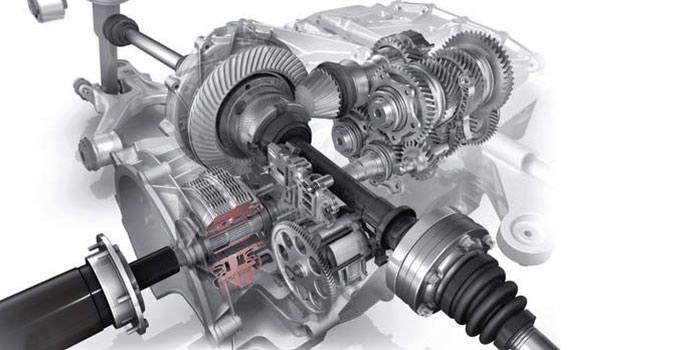
Dual clutch transmissions are like having two manual transmissions shifting together while being controlled like an automatic transmission. This is the transmission of the future because it is lighter than an automatic and is just as efficient as a manual transmission.
• Instead of a linkage connected to a shifter in the cabin, the shift forks are actuated by hydraulic or electric solenoids. There is no clutch pedal, it is done the computer controlled actuators. When up shifted, one clutch is disengaged and the other engages, this allows for uninterrupted power delivery.
• While one gear on a shaft is driving the wheels, the next anticipated gear is engaged and readied on the opposite shaft while its clutch is disengaged.
• The shifting behavior can be fine-tuned by software allowing very different characteristics using the same transmission. It can act like a normal automatic transmission, or the driver can shift it like a normal manual with button mounted behind the steering wheel or shifter.
• The input shafts connect to what could be called counter shafts that run parallel to each other. One shaft can have the odd numbered gears while the other has the even gears. Some manufacturers call each shaft “sub transmissions.” The shafts connect to the output shaft.
Article courtesy Brake & Front End.













